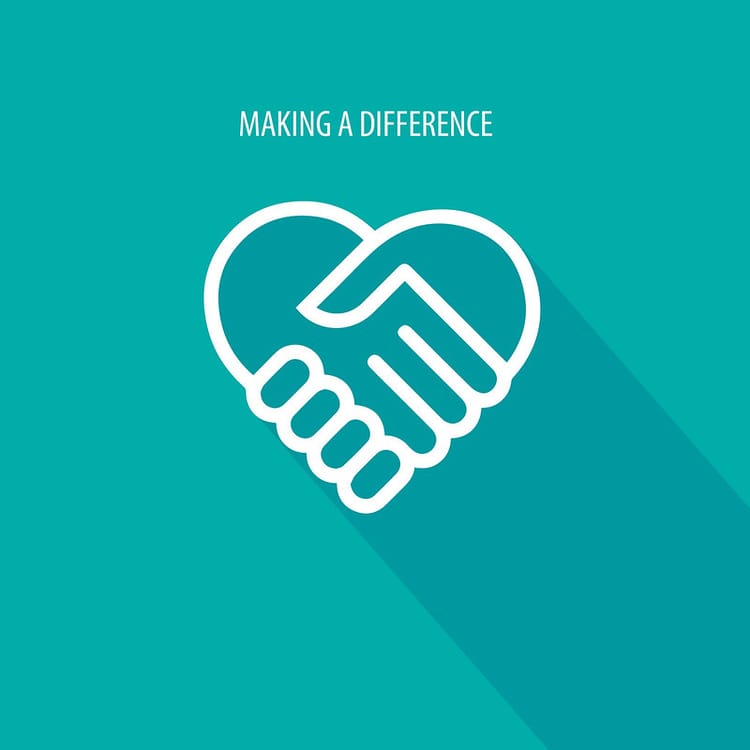Self-Sabotage is the Shame-Filled Mistake of Personal Development

How to Expand Your Comfort Zone and Improve Your Life by Using this Simple Process.
Recently, I’ve been reading articles by Benjamin Hardy, PhD, one of the top personal development authors on Medium and an author of several books. Hardy’s work is not new to me, but I read a new article he published in early August and promptly re-subscribed to his newsletter.
What Hardy wrote in the article, along with what I learned in the free webinar replay I got to watch as a subscriber, triggered a profound awareness in me. It wasn’t really anything new that he wrote in itself, but sometimes it’s the right time and the right ordering of ideas that trigger a response. Since then, I have been “coaching myself” to get clarity on what’s not been working for me in how I approach my business and marketing, and what I can do to change that.
Now, because I’m on Hardy’s mailing list, I get regular updates about new articles. I was reading one of his latest, “5AM Club: Turn Your Alarm Clock Into A Trigger,” and noticed he used the term self-sabotage several times about not accomplishing your goals. He uses the term again in another article and it bothered me enough to start writing this article. And before I go any further, let me make it clear that this article is not an attack on Hardy whatsoever. From here on I will only be referring to the problematic phrase, self-sabotage.
There Is No Such Thing as Self-Sabotage.
I used to think that self-sabotage made sense until I learned how to see it differently through neuroscience.
The way we have used language to come up with such a term is a shameful way to critique and judge yourself! But if self-sabotage isn’t a real thing, then why did we come up with the term? What’s the reason for not doing what you know you need to do to get what you want in life?
Comfort, Prediction, and Response.
First, let’s address the very sick elephant in the room: the shame associated with the idea of self-sabotage. To get over this shameful error perpetuated by personal development and to finally toss the concept in the waste-bin of “Thank-goodness-we-now-know-better,” we need to understand the difference between shame and guilt.
What is Shame?
Shame encompasses the emotions about who you are and how you feel about yourself when you have done something wrong, e.g., that you’re not good enough, that you’re a bad person, or that you’re broken. You can make yourself feel shame, and others can shame you (if you let them), diminishing your self-worth.
Shame is how you feel about who you are or who you are not.
- A coach, an author, or an advertisement tells you that you don’t have enough willpower or motivation.
- Judging yourself with thoughts like, “What’s wrong with me?” And, “Why can’t I be successful?”
- Other people who tell you that you’re a bad person or less equal (or not deserving to live) because you’re trans, gay, lesbian, black, or any other label/identity that makes them uncomfortable.
Guilt Is How You Feel About What You Did or Didn’t Do.
When you feel guilt it’s an awareness relating to your choices or behaviours, and not about who you are. If you feel shame you feel bad about yourself, but with guilt, you recognize you made a bad choice, which you can correct or apologize for, but it has nothing to do with your self-worth.
Guilt is preferable to shame.
- I wish I had gotten up early this morning, as planned, to work on my book.
- I feel bad that I didn’t show up on time and kept my friend waiting.
- I don’t feel great about missing my exercise this morning.
A Coach’s Perspective.
In February, I enrolled in a year-long coaching certification program that teaches how to apply lessons from neuroscience in coaching to help my clients get more focus, clarity, direction, and to create healthy neuro-associations that minimize threat or stress and lead to more efficient and effective personal transformation. I was asked in the first lesson, “Do I believe that people are lazy, weak-willed, and self-sabotaging, or is it something else?”
If I believed that people were lazy and self-sabotaging, my approach would be didactic, telling people what to do, how to act, and saying things like, “No pain, no gain,” or “No excuses.”
And for those past beliefs, I sincerely apologize — to myself and others who have read my work. I espoused the idea of self-sabotage because I believed it to be true. Here is something I wrote in late 2017:
“There are many reasons for not achieving your goals or resolutions. A big reason is self-sabotage. The dictionary definition of sabotage is, a ‘Treacherous action to defeat or hinder a cause or endeavour.’ Treacherous may seem like a harsh word in the context of goal achievement, but when we add the word ‘self’ in front of ‘sabotage’ the meaning of the word ‘treacherous’ is all the more potent. Why would we consciously deny ourselves achievement, betterment, or greatness?”Why I’m Not Good Enough: My Dirty Gay Secret
Why indeed! Thankfully, I now know that self-sabotage is a harmful concept based on a misunderstanding, a misuse of language, and a past perspective that does far more harm than good. Even though I had the best intentions in my 2018 article and spoke from the heart, I now see how harmful this belief of self-sabotage was for myself. I perpetuated my shame and found myself trapped in its grip.
Most People Are Good People Who Want Good Things — For Themselves and Others.
The issue is that most people don’t know what they don’t know. Case in point, me not knowing about anything different about self-sabotage. Most often the reason we don’t know what we don’t know is that our unconscious programming is running our day-to-day lives and we have no clue how to reprogram our brain.
In other words, our unconscious programming includes all the habits, routines, behaviours, reactions, and movements we do without even thinking about them. This includes things like,
- Being able to have a conversation with a friend while driving your car at 120 KM/hour while paying attention to the GPS instructions on your phone telling you that you need to merge into the right-hand lane in 500 metres;
- Making all the complex movements required to use a knife and fork to break apart food and then lift the morsel of food to your mouth on the fork, or;
- Sticking to your morning routine that includes going for a run 5-days per week, rain or shine, at 6 AM.
People Are Stuck in the Comfort Zone of Prediction and Response.
To make anything from the smallest change to the largest of personal transformations, we need to make new neuro-associations based on what we know. This means we build upon what we know to minimize resistance to change and to help in accomplishing what we set out to do.
Prediction and response live in our deeper, subconscious programming, like the examples I provided above. It’s also a behavioural or mental strategy for keeping us safe and free from stress or threat. The most ancient part of the brain, the amygdala, is constantly asking, “Am I safe?” The amygdala is looking for what it knows (prediction) which informs a saved response (your programmed response to a past event or learning).
When we know what we know, and when we know what we think we know, we feel safe.
As soon as we face something entirely new, or have to learn how to do something different, that’s the moment we face the uncertainly of no prediction and thus no response. This is the moment we either challenge our comfort zone or if this is an extreme situation, we might react by lashing out in an argument (fight), avoiding the situation (flight) or shutting down emotionally — perhaps feeling shame (freeze).
Challenging Your Comfort Zone Successfully Requires Minimizing Threat.
For example, learning how to squat with a barbell on your back for the very first time can be very difficult without any instruction, especially if you believe that the movement is entirely new to you. As a former fitness and nutrition coach, I used to love coaching the squat and the deadlift because I loved breaking down the movement into easy to execute parts and to teach my client that these are primal and primary movements they have been doing since they could first walk.
When I taught the barbell squat, to create a new neuro-association for the client, I would ask them to stand with their back to a flat bench and ask them to sit down. I would then say to the client, “Congratulations, you just did your first squat!” We’d laugh (making the learning moment fun and creating a positive emotional response) and then I’d explain they squat all day long when they go to the toilet, sit down for dinner or sit in their chair at work. The next steps would involve teaching parts of the squat movement to prepare the client for using weights, which would require new movement patterning, which is just another way of saying, learning a new habit.
The Story of the Potential Coaching Client.
As a coach, I see in myself and others the challenge of expressing what we want, and then not taking the “right” actions to get what we want. Two months ago a prospective client asked a colleague of mine if he knew of any life coaches. My colleague recommended me and made introductions. Since that time the prospect has yet to confirm a time for an exploration session with me or to complete my online questionnaire so that I can learn more about him and what he’s looking for. Here is part of what I wrote to him earlier today:
“Something is holding you back. It could be fear, uncertainty, not having enough time, or worried about what might happen if you hire a coach and get the changes you want very much to happen in your life.
Ironically, we often stop short of doing what we know we want to do, and that’s not self-sabotage, rather, its human nature to want to remain in our comfort zone. This is simply a matter of what we know and the more ancient parts of our brains are quite content doing what they need to do to keep us “stuck in place,” namely, safe from harm or stress.”
New Practice, New Patterns, New Perspective.
Most often, the biggest reason a client chooses to work with me is that they are stuck. That may show up as a lack of focus or direction, or that they have tried several ways to succeed at their goal, only to give up, or feel too much frustration to continue. They are looking for an answer to solve their problem.
When my clients — or you — are struggling or frustrated, it’s because they (and you) are not happy. They are trying to fight against subconscious programming that’s designed to keep them safe by doing things that take them much too far out of their comfort zone. This might seem like a paradox, but it’s about how you approach change.
As I wrote earlier, to create effective and lasting change (which means the same thing as accomplishing your goals, just that goals are usually associated with a date in the future) you need to build upon what you already know. In other words, you learn something new that you can associate with what you know which makes it easier to incorporate into who you are. That’s the basis for making new neuro-associations that challenges your comfort zone (your predictions and responses), as opposed to confronting it which ends up as resistance to change.
The A.I.R. Process.
Personal transformation is a process, one that requires conscious awareness, focus, clarity, direction, desire, and practice. A.I.R. stands for Attention, Intention, and Repetition (credit for this idea goes to my coach, Dax Moy).
Attention.
You need to be crystal clear about why you want to make a change in your life, why you want to start a new habit, or why you want this new goal.
Your “why” will lead to the focus and the clarity about what you want. This could be a list of benefits that include an improved financial situation, better physical health, a healthier relationship, and so on.
Intention.
How you feel about anything dictates response and reaction.
Fear and threat will cause a reaction and not take you towards your goals. Positive, powerful, joyful, and impactful emotions and feelings are required to override your comfort zone and to keep you wanting to do what you need to do to get what you want.
If your intention is laissez-faire — “Whatever, I guess I could try and get up at 6 AM every morning to write in my journal” — you are guaranteed to fail at that endeavour. I’m not suggesting you “Ra-Ra-Ra” yourself into what you want with false, positive emotions. Think back to something you really wanted that you now have in your life. What did you feel during the process of accomplishing that goal? How long did you sustain those feelings to take action? How easy was it to pursue your goal when you felt those feelings? The more powerful your emotions, the greater your intentions will be.
Repetition.
You know what you want and why it’s meaningful and important to you. You have associated that desire with feelings that will make it easy to engage in the actions required to practice (just another word for doing the work).
But practice requires repetition to get a result. Practice does not make perfect, rather, practice makes for improvement (i.e., getting what you want). Your practice needs to be done repeatedly until your new habit happens pretty much automatically, or you have accomplished your goal.
Give That Person Some A.I.R.!
The great thing about this A.I.R. process for creating change is that each step will tell you a lot about yourself. When you go through “Attention” you might see the reasons for your resistance to making a particular change. When you know your reasons, you have something to work with. Instead of blindly leaping into the darkness of, “Your can do it!”, or, “No more excuses!”, you will be able to come up with strategies to make new neuro-associations.
If you are not feeling it, you will not get it. That is the simple elegance of having a powerful “Intention”.
And lastly, “Repetition” without a compelling reason (attention) or a strong enough feeling for wanting to do the work (intention) is deflating and not motivating. You will remain stuck in your comfort zone — but thankfully it won’t sabotage your entire life!
Originally published on The Ascent. Photo by Jack Sharp on Unsplash





Member discussion